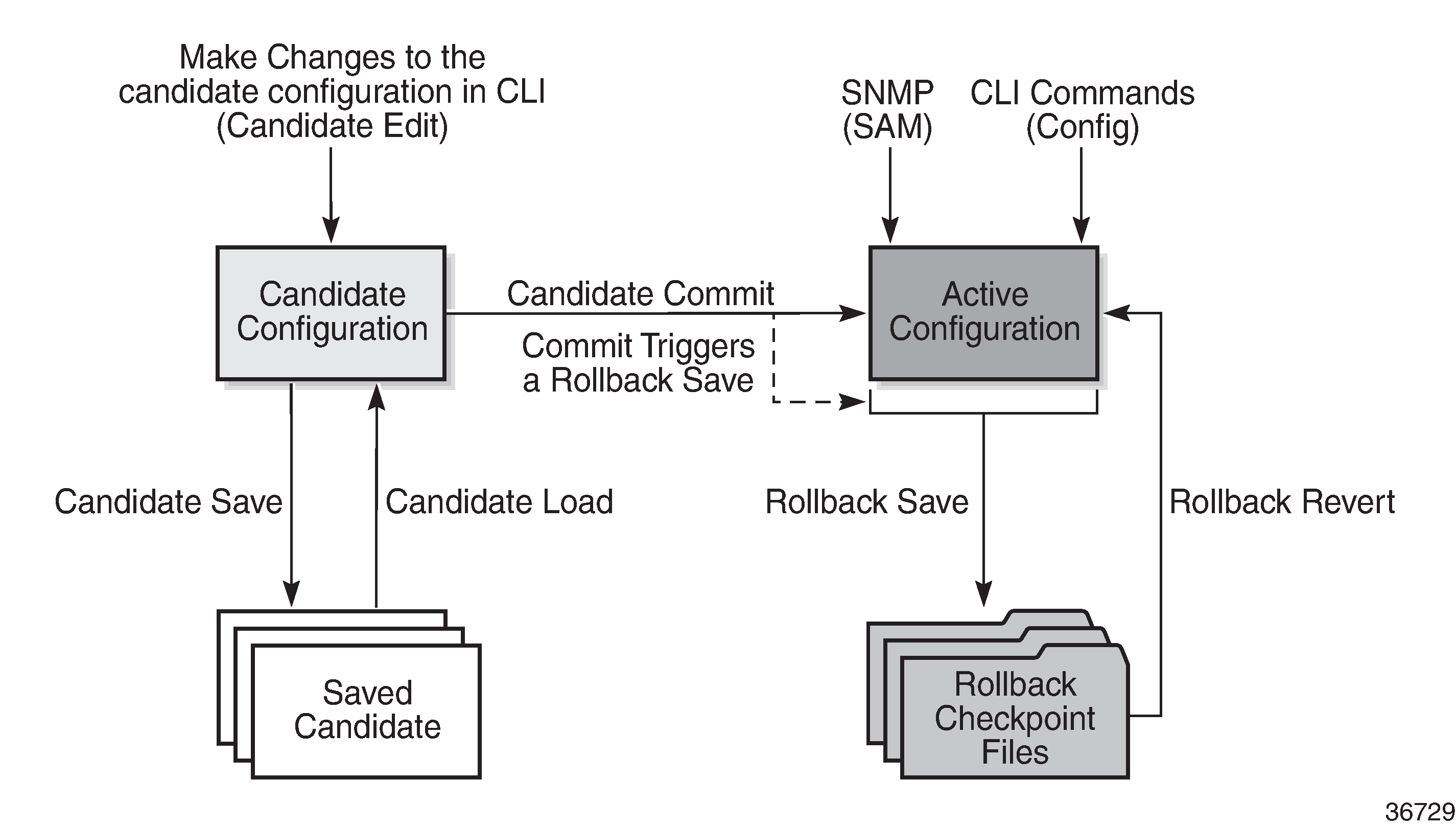Transactional configuration allows a user to make configuration changes inside a candidate configuration without actually causing changes to the active or operational configuration of the router. When the candidate configuration is complete, the user can explicitly commit the changes and cause the new configuration to become active. Transactional configuration gives the user better control and visibility over their router configurations and reduces operational risk while increasing flexibility.
Transactional configuration and CLI Configuration Rollback combine to provide the operational model depicted in Figure: Router Configuration with Rollback and Transactions.
Figure: Router Configuration with Rollback and Transactions
